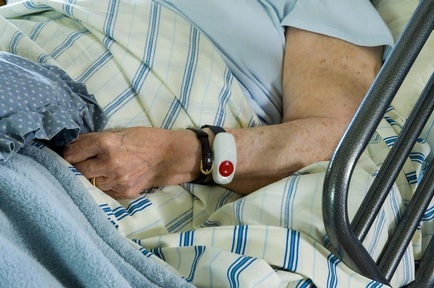End of life care better in care homes than hospitals
The quality of care given to people at the end of their lives is significantly better in care homes, hospices and at home than in hospitals, according to a new survey.

The third National Survey of Bereaved People (VOICES), where bereaved people are asked for their views on the quality of care provided to a friend or relative in the last three months for England, found the quality of end of life care has not changed significantly between 2011, 2012 and 2013.
The survey which was published by the Office for National Statistics (ONS), also revealed that end of life care has worsened for those dying at home with the quality of coordination of care rated significantly lower in 2013 compared to 2012.
However on the plus side, the dignity and respect for patients shown by hospital nurses and hospice nurses has increased between 2011 and 2013.
Claire Henry, chief executive of the National Council for Palliative Care said: “Despite some encouraging progress, particularly in the dignity and respect shown by nurses, it’s hugely concerning that many people are still being failed when they are dying.
“Once again end of life care in many hospitals is clearly falling short – something which should be a particular concern given that almost half of the people in the survey died in hospital, even though just three per cent of people who expressed a wish had said that this was where they wanted to die. It’s also disappointing that feedback on the overall quality of care provided has not improved since 2011.”
The ONS also found that pain is relieved most effectively in the hospice setting (62 per cent) and least effectively at home (18 per cent).
While only one third of people (35 per cent) who express a preference to die at home, actually die at home.
Ms Henry added that the challenge now is to transform the way in which we care for people who are dying, so that everyone receives the care that is right for them, based on their wishes and their needs.
She added: “It’s simply unacceptable to have so much inconsistency in end of life care, with pain relief in hospital and at home far less available than in care homes or hospices and the quality of care varying depending on where you are and what your condition is. It’s also a real cause for concern that for those dying at home coordination of care appears to be getting worse, not better.
“All those involved in end of life care must see it as a priority and make care of people who are dying part of their core business. This requires strong leadership at a local level including from hospital boards, Clinical Commissioning Groups and Health and Wellbeing Boards as well as nationally, and the right training and support for staff, so that they understand what’s expected of them and how to best deliver excellent end of life care. We only have one chance to get end of life care right, and at present this chance is sadly being missed on too many occasions.”
Latest News
 29-Jul-24
Dementia Bus gives carehome.co.uk staff insight into life with dementia
29-Jul-24
Dementia Bus gives carehome.co.uk staff insight into life with dementia
 01-Mar-24
Find out the top care homes in 2024
01-Mar-24
Find out the top care homes in 2024
 21-Mar-23
UK's top care homes in 2023 revealed
21-Mar-23
UK's top care homes in 2023 revealed
 03-Jan-23
carehome.co.uk launches free care helpline
03-Jan-23
carehome.co.uk launches free care helpline
 13-Dec-22
5 mins with Emily Whitehurst, chief operating officer for Constantia Healthcare
13-Dec-22
5 mins with Emily Whitehurst, chief operating officer for Constantia Healthcare